Will the French ever embrace modernity?
Somewhat understandably, many Parisians have fought against the arrival of the contemporary architect.
The idea that the French idyll might be disturbed by the egocentric creation of some new-fangled ‘STARchitect’ is justifiably shudder-worthy. However, I propose that Paris should open its tree-lined arms to the inevitable coming of contemporary architecture.
Writing on the 80th birthday of the celebrated British architect Richard Rogers, I’m sitting in the entrance hall of his controversial brainchild: the Centre Georges Pompidou. This once scandalous structure has proven to be an enormous success for Paris and in subsequent franchises across France, the Parisian branch attracting 3.8 million visitors last year (the 6th most visited art gallery worldwide).¹
Uncovering the gargantuan French beast
The fact that Rogers’ and Piano’s entry for the Pompidou competition was even considered is remarkable.
Both unknown architects at the time, this radical proposal was up against a further 681 entries, including a number of established French architects. The idea that this gargantuan beast could sew seamlessly into the Parisian fabric was deemed laughable at the time. The overriding sense that the historic centre would implode alongside its monstrous new neighbour was overthrown by the foresight of France’s then President.
The centre revitalised not only its immediate surroundings, but also how we have since strived to build equivalent centres of culture.
Rogers and Piano envisaged a democratic centre for the arts, pitching it as “a live centre for information, entertainment and culture”.
The vision to provide not just an art gallery but an all-encompassing cultural experience is palpable; I have spent three hours here and am yet to set foot in a gallery!
Half the site is given over to what feels like a re-imagined Roman forum, sloping down to the feet of the building’s many colourful limbs. It is from here that one is elevated both in height and ore up its meandering escalator and delivered to the galleries.
A truly uplifting experience; the rooftops of Paris appear as if a blind is being slowly drawn up from the horizon.
An incongruous addition to the French capital?
Its critics do, however, have a point. This gangly giant doesn’t fit alongside a ‘typical’ French scene.
Is this not a sign of positive change though?
Although undoubtedly beautiful, the grand boulevards of Paris do hold an inherent austerity. Contrary to the monolithic façades and closed fabric of the old, the Pompidou represents an openness akin to the philosophy of Rogers’ democratic architecture:
“Everyone has the right to walk from one end of the city to the other in secure and beautiful spaces.”²
The Pompidou, along with its public forum, provides this sense of a place for all.
The Pompidou’s success is largely due to its versatile and expansive gallery spaces, achieved by the ingeniously devised structural spans. These open floor plates allow for a far greater variety and turn-around of exhibits compared to the inflexibility of many of France’s historic galleries.
This is in no way to say that they are being usurped, but that a new type of gallery is required to accommodate the changing expectations for increasingly instantaneous venues.
France: holding onto the past, or stepping into the future?
As the cultural capital of France (and arguably the world), Paris must not only embrace the culture of its triumphal past if it is to maintain such a standing.
The Pompidou, along with other flagship examples of contemporary architecture such as the Fondation Cartier and Louvre Pyramid, can, I believe, maintain and further the city’s status as the leader in culture and the arts.
As Rogers correctly describes, “Cities are about juxtaposition.”³ It is this that the city must remember when considering the direction of its future.
Paris must be an exhibition, not a museum.
What do you think? Should Paris continue to hold strongly onto its past? Or, is it time to embrace modernity?
References:1. List of most-visited art museums in the world, on Wikipedia.
2 & 3. Centre Pompidou, on Rogers Stirk Habour + Partners LLP. Image credits:
1 & 5. © James Rogers.
2. Centre Pompidou Interior, by Steve Shupe, via Flickr.
4. Inside Centre Georges Pompidou, by David Wheeler, via Flickr.
3 & 6. © Hannah Duke.

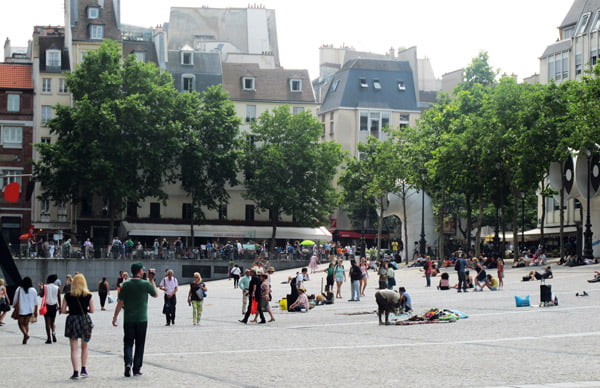
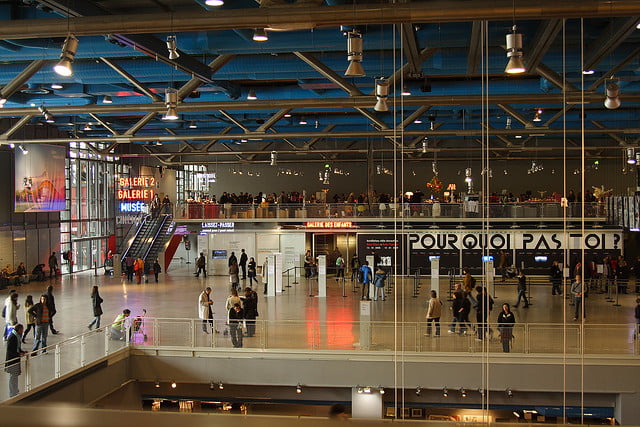
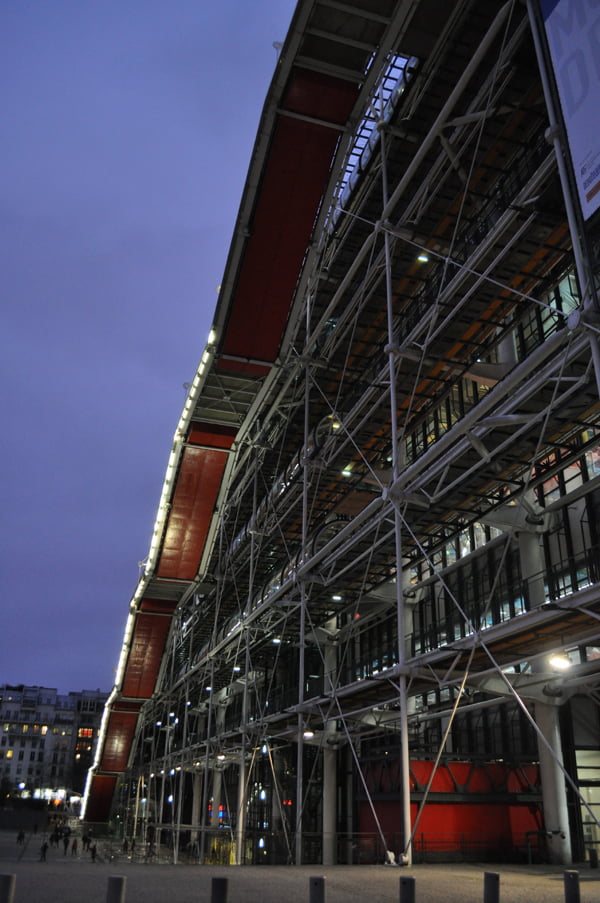
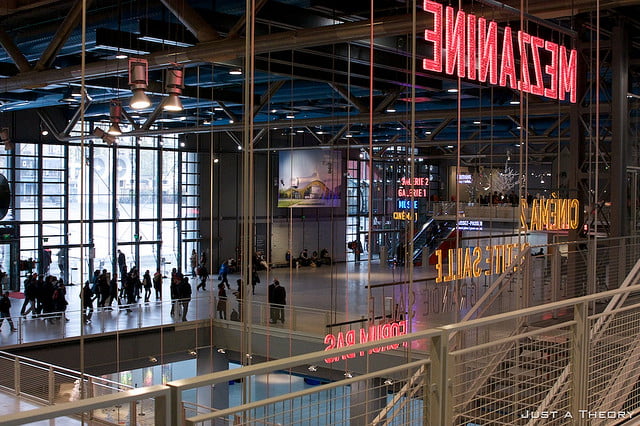

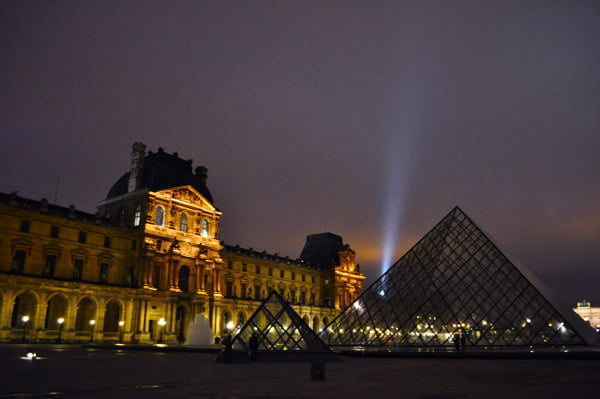






Great article James – really interesting!
Dare I say – perhaps there is a middle ground?
As a stickler for traditional architecture it would be all too easy for me to deny the advantages of embracing modernity.
The traditional architecture of an ancient régime is, no doubt, beautiful – and attracts thousands of tourists – but perhaps it is time to embrace a new style for the new generation. Surely one of the major roles of architecture is to reflect current styles?
Thanks Alex.
I would certainly agree that a middle ground is possible. There is space in a city for all styles of architecture, and in my opinion, thats the most interesting type of city to be in.
And you’re absolutely right about a major role of architecture being to reflect current styles. The changes in architectural styles are deeply routed in changes in culture and society. Responding to cultural changes is one of the Pompidou’s great successes as a building.
I think too there is room for both in this romantic – architecturally romantic – city.
I have always thought of the centre Pompidou as very much part of Paris and its architecture – I think because it is very central it helps all the more.
I have certainly noticed that France isn’t afraid of contemporary design, whereas the UK is often more reserved, or feels to me more reserved, particularly if converting an older building. Would a building like the centre Pompidou have been built in London in the 70s?
Thanks Esme. Very good question – I don’t think this would have been built in London in the 70’s. It was with great foresight that Georges Pompidou endorsed such a building. Although many of the leading architects of this style were British, (Rogers, Foster, Hopkins for example) they still faced much opposition in Britain. eg. Prince Charles’ famous “monstrous carbuncle” description of Richard Rogers’ proposal in 1984. It was probably not until the late 80’s that these architects began to win larger works in Britain.
I think the only way that modern architecture can fit in with traditional structures is if the newcomers are given their own space. The Pompidou has that and subsequently it works. It is not competing with tradition but instead stands alone as art as well as architecture.